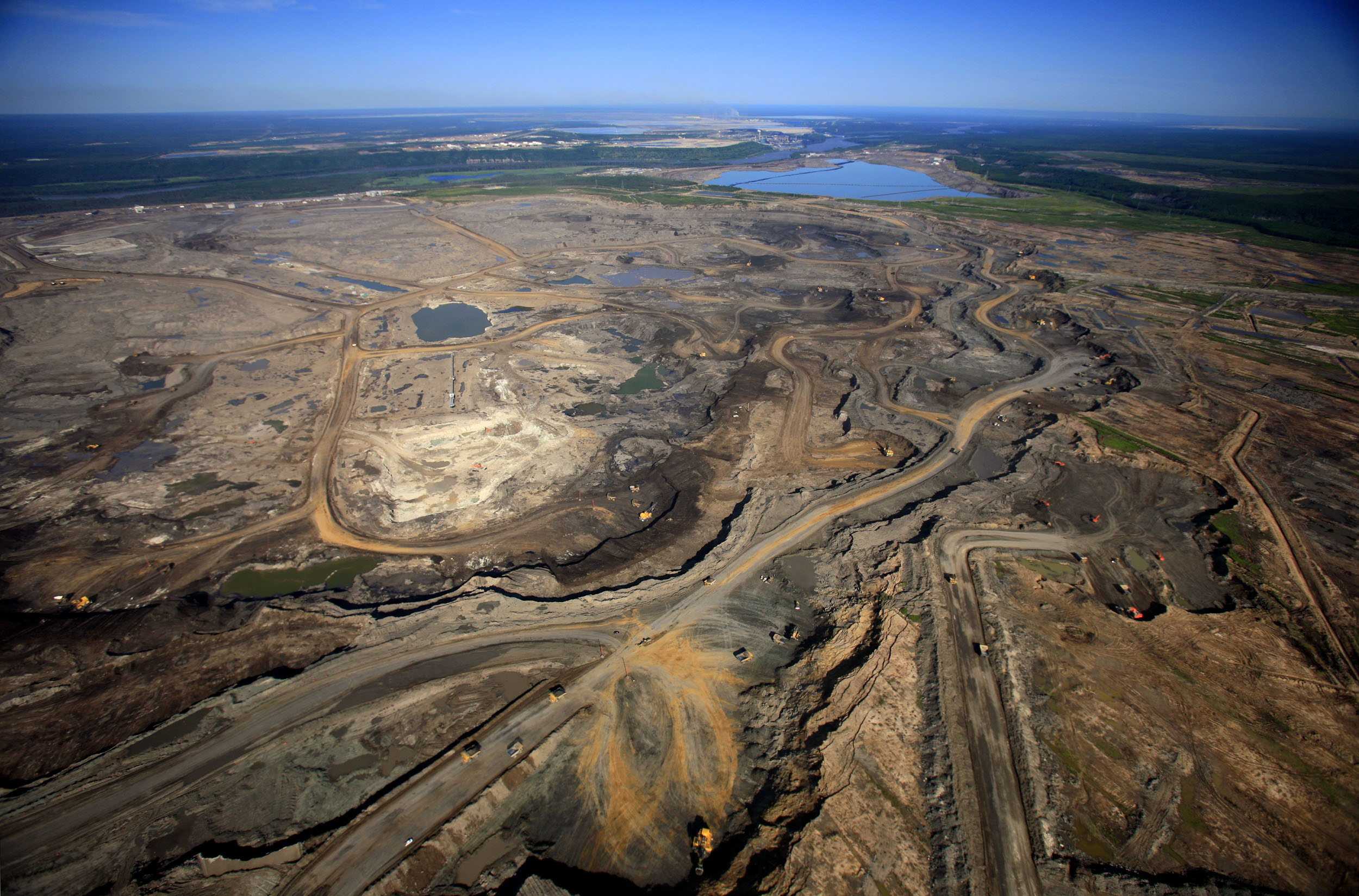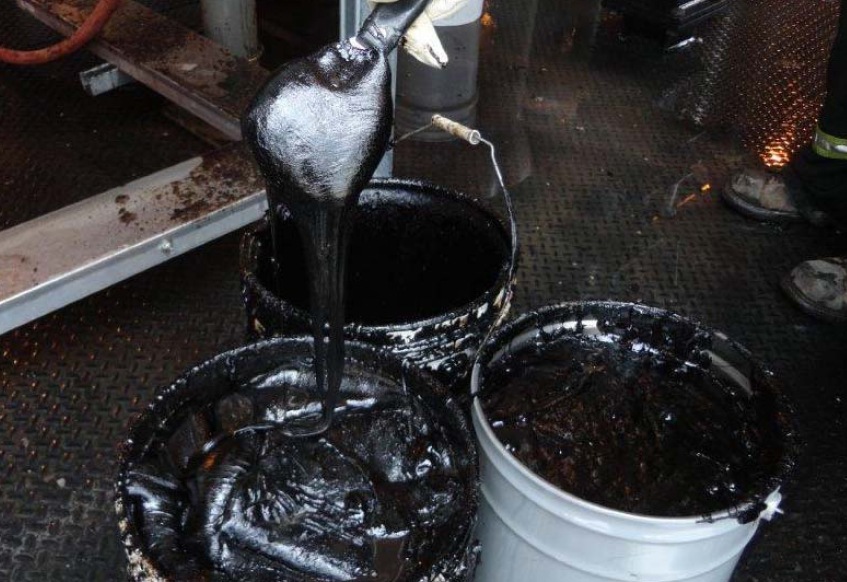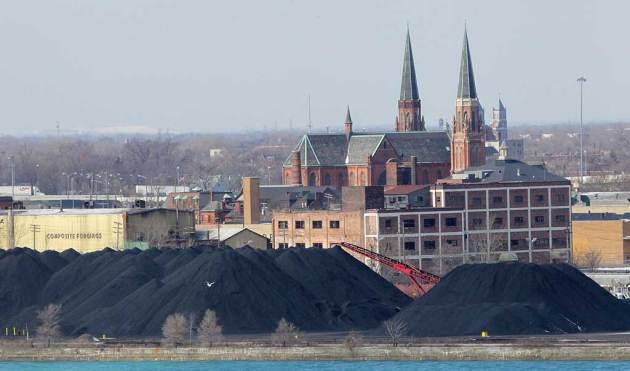Tar Sands

Tar sands mine, Alberta, Canada.
© Jiri Rezac / Greenpeace
The production of petroleum from the tar sands in Alberta has become one of the most pressing environmental and human rights issues in Canada.
The tar sands (also known as oil sands) is the largest industrial project on earth, yet few people are aware of the rapid pace of growth and its impact on our environment, economy, and society.
Facts about these impacts are available at Oil Sands Reality Check
Refining Tar Sands
This site focuses on the refineries that process tar sands crude in the USA and Canada. The refining of tar sands crude is a particularly intensive and polluting process and has increased dramatically in recent years.

Tar sands bitumen freshly extracted from an in situ well.
Source: Southern Pacific Resource Corporation - investor presentation, October 2012.
The tar sands yield a form of hydrocarbon called bitumen that is carbon rich and hydrogen poor. Because of its carbon-richness, bitumen is not a liquid and at room temperature has a texture similar to molasses. It is sometimes labeled as an extra-heavy crude oil but is essentially bitumen or tar.
Refineries convert crude oil into light hydrocarbons such as gasoline and diesel. As bitumen is so heavy, converting it into these light hydrocarbons requires several intensive processes.
In each of these processes, (e.g. distilling, coking and hydrotreating) more energy and heat is required than would be required for refining conventional heavy crude oil. This means more pollution is emitted at the refinery and at power plants supplying electricity to the refinery.

Tar sands upgrader in Alberta, Canada.
© Jiri Rezac / Greenpeace
According to the U.S. Geological Survey, bitumen contains 102 times more copper, 21 times more vanadium, 11 times more sulfur, 6 times more nitrogen, 11 times more nickel, and 5 times more lead than conventional heavy crude oil.
These toxins can increase harmful emissions around refineries and can also end up concentrated in refinery byproducts such as petroleum coke.
See this report for a detailed explanation of differences in refining tar sands bitumen and conventional heavy oil.
Different tar sands products
A proportion of tar sands bitumen is ‘upgraded’ in Alberta at special refineries known as upgraders. These refineries essentially strip a lot of the carbon from the bitumen and produce a light synthetic crude oil (known as Syncrude or SCO), which can then be sold to most refineries for further processing into transport fuels and other products.
However, an increasing proportion of tar sands bitumen production is being sent to refineries that are specially equipped to refine bitumen that has not been upgraded. This bitumen is diluted with very light hydrocarbons called Natural Gas Liquids (NGLs) so that it can flow in pipelines to refineries that then strip the NGLs out and refine the bitumen. The diluted bitumen is called Dilbit.
Not every refinery can refine dilbit or other bitumen blends. A number of refineries in the US and Canada have invested in equipment to refine bitumen and other heavy crude oils. These are largely concentrated in the US Midwest and Gulf Coast but there are also some on the east and west coasts of both countries.
However, most refineries can handle syncrude. This website tracks syncrude, dilbit and other bitumen blends to the refineries that process it.
Petcoke: the coal hiding in the tar sands

A pile of petcoke that was dumped next to the Detroit River. It has since been removed following local protests.
© Doug Hayes.
Refining bitumen generally requires a process called coking. Coking removes the excess carbon in the bitumen and distils it into a solid substance similar to coal called petroleum coke or petcoke.
Petcoke is sold into the coal market at a steep discount and is being burnt together with coal in coal-fired power plants around the world. As it emits more carbon pollution than coal, petcoke from tar sands refining is making coal-fired power generation dirtier and cheaper.
A report on Petcoke and tar sands is available here.